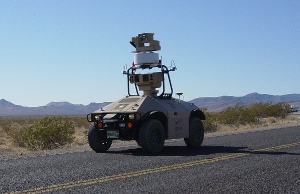Oct 12 2010
The National Nuclear Security Administration (NNSA) has announced that the Nevada National Security Site (NNSS) has procured a Mobile Detection Assessment Response System robot (MDARS) for patrolling the remote areas of the NNSS.
 MDARS Robot
MDARS Robot
The security agency at the nuclear test site has planned to purchase two more MDARS robots in another six months.
The MDARS robot was developed by General Dynamics as an outcome of the JPEO-CBD – PM Force Protection Systems of the US army. It is a fully automated compact robot and direct action of the operator is required only when it comes across any interloper or any dubious activity. During such situations, the operator at the NNSS command center can control the robot and view the happenings by means of instantaneous videos and in-built sensors.
Brad Peterson, Chief and Associate Administrator for Defense Nuclear Security, has stated that MDARS robots are a significant addition to their NNSS security force by providing improved safety at an affordable price. According to NNSA, this robot has enabled them to save $6 million by avoiding the procurement of basic infrastructure facilities like towers, lights, burial of cables for supporting towers, motion detection units and trenching for protecting the isolated vulnerable areas of the site. Additionally, it was expected that by deploying MDARS robots, another $1 million can be saved annually by eliminating the security force expense and device maintenance overhead.
The MDARS robots can function at a speed of 20 miles per hour and can operate continuously for more than 12 hours without the need to be replenished. These robots have radio frequency identification tags for monitoring inventory as well as various barricades like gates and locks. The protective force’s members are trained regarding the operation of MDARS including manual instigation and rescheduling patrols, robot controlling methods and method of using the speaker and microphone for communicating with humans encountered by the robot.